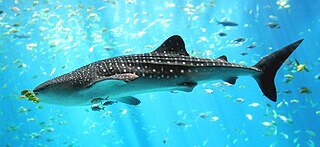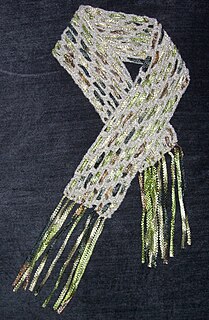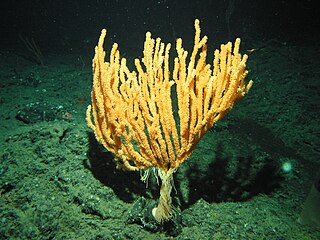
The giant panda, also known as the panda bear or simply the panda, is a bear native to south central China. It is characterised by large, black patches around its eyes, over the ears, and across its round body. The name "giant panda" is sometimes used to distinguish it from the red panda, a neighboring musteloid. Though it belongs to the order Carnivora, the giant panda is a folivore, with bamboo shoots and leaves making up more than 99% of its diet. Giant pandas in the wild will occasionally eat other grasses, wild tubers, or even meat in the form of birds, rodents, or carrion. In captivity, they may receive honey, eggs, fish, yams, shrub leaves, oranges, or bananas along with specially prepared food.

Bamboos are a diverse group of evergreen perennial flowering plants in the subfamily Bambusoideae of the grass family Poaceae. The origin of the word "bamboo" is uncertain, but it probably comes from the Dutch or Portuguese language, which originally borrowed it from Malay or Kannada.

Carpet sharks are sharks classified in the order Orectolobiformes. Sometimes the common name "carpet shark" is used interchangeably with "wobbegong", which is the common name of sharks in the family Orectolobidae. Carpet sharks have five gill slits, two spineless dorsal fins, and a small mouth that does not extend past the eyes. Many species have barbels.

The golden bamboo lemur, bokombolomena or varibolomena in Malagasy, is a medium-sized bamboo lemur endemic to south-eastern Madagascar.

The whitespotted bamboo shark is a carpet shark with an adult size that approaches one metre in length. This small, mostly nocturnal species is harmless to humans. The whitespotted bamboo shark is occasionally kept as a pet in larger home aquaria. It can grow up to 93 centimetres (37 in) long.

The greater bamboo lemur, also known as the broad-nosed bamboo lemur and the broad-nosed gentle lemur, is the largest bamboo lemur, at over five pounds or nearly 2.5 kilograms. It has greyish brown fur and white ear tufts, and has a head-body length of around one and a half feet, or forty to fifty centimeters. They have relatively long tails and long back legs for leaping vertically amongst the trees of their forest habitat. It feeds almost exclusively on the bamboo species of Cathariostachys madagascariensis, preferring the shoots but also eating the pith and leaves. It is unknown how their metabolism deals with the cyanide found in the shoots. The typical daily dose would be enough to kill humans. Greater bamboo lemurs occasionally consume fungi, flowers, and fruit. Its main food source is bamboo and it is the main reason why it has become critically endangered. Areas with high density of bamboo have major human disturbances, where humans cut or illegally cut down bamboo. Its only confirmed predators are the fossa and the bushpigs, but raptors are also suspected. Its current range is restricted to southeastern Madagascar, although fossils indicate its former range extended across bigger areas of the island, including as far north as Ankarana. Some notable parts of the current range are the Ranomafana and Andringitra National Parks.

The eastern lesser bamboo lemur, also known as the gray bamboo lemur, the gray gentle lemur, and the Mahajanga lemur is a small lemur endemic to Madagascar, with three known subspecies. As its name suggests, the eastern lesser bamboo lemur feeds mainly on bamboo. The lemurs of the genus Hapalemur have more manual dexterity and hand–eye coordination than most lemurs. They are vertical climbers and jump from stalk to stalk in thick bamboo forests.

The Hemiscylliidae are a family of sharks in the order Orectolobiformes, commonly known as longtail carpet sharks and sometimes as bamboo sharks. They are found in shallow waters of the tropical Indo-Pacific.

A bamboo fly rod or a split cane rod is a fly fishing rod that is made from bamboo. The British generally use the term "split cane." In the U.S., most use the term "bamboo." The "heyday" of bamboo fly rod production and use was an approximately 75-year period from the 1870s to the 1950s when fiberglass became the predominant material for fly rods. Nevertheless, bamboo fly rods made from skilled makers continue to be 'state-of-the-art' in performance and are cherished and revered by their owners.

The lesser bamboo bat or lesser flat-headed bat is one of the smallest species of vesper bat, and is native to Southeast Asia.

The plushcap is a species of bird in the tanager family Thraupidae and it is the only member of the genus Catamblyrhynchus.

The golden monkey is a species of Old World monkey found in the Virunga volcanic mountains of Central Africa, including four national parks: Mgahinga, in south-west Uganda; Volcanoes, in north-west Rwanda; and Virunga and Kahuzi-Biéga, in the eastern Democratic Republic of Congo. It is restricted to highland forest, especially near bamboo.

Bamboo textile is any cloth, yarn or clothing made from bamboo fibres. While historically used only for structural elements, such as bustles and the ribs of corsets, in recent years different technologies have been developed that allow bamboo fibre to be used for a wide range of textile and fashion applications.

Tylonycteris is a genus of bats within the Vespertilionidae or "vesper bat" family. The name translates as "padded bat", and refers to the presence of hairless fleshy pads on the hands and feet, which the bats use to help them grip onto bamboo. They are also known as the bamboo bats.

Bamboo coral, family Isididae, is a family of mostly deep-sea coral of the phylum Cnidaria. It is a commonly recognized inhabitant of the deep sea, due to the clearly articulated skeletons of the species. Deep water coral species such as this are especially affected by the practice of bottom trawling. These organisms may be an important environmental indicator in the study of long term climate change, as some specimens of bamboo coral have been discovered that are 4,000 years old.
The pygmy bamboo bat is a species of vesper bat in the family Vespertilionidae. It is found in Southwest China and was discovered in 2007. The species is around 4 cm long and weighs between 2.6 and 3.5 grams.

The flora of China is diverse. More than 30,000 plant species are native to China, representing nearly one-eighth of the world's total plant species, including thousands found nowhere else on Earth.

Bamboo shoots or bamboo sprouts are the edible shoots of many bamboo species including Bambusa vulgaris and Phyllostachys edulis. They are used as vegetables in numerous Asian dishes and broths. They are sold in various processed shapes, and are available in fresh, dried, and canned versions.
Bamboo forestry is a cultivation and raw material industry that provides the raw materials for the broader bamboo industry, worth over 72 billion dollars globally in 2019.
Glischropus bucephalus, the Indochinese thick-thumbed bat, is a species of bat in the family Vespertilionidae. The bat is found in Cambodia, Myanmar, Laos, Thailand and Vietnam north of the Isthmus of Kra.















